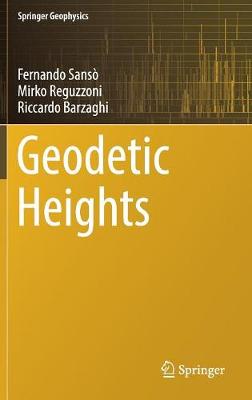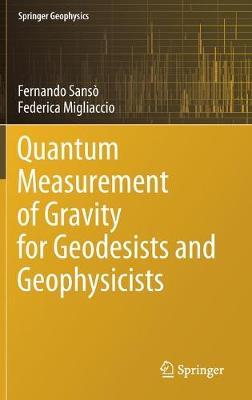Springer Geophysics
2 total works
Geodetic Heights
by Fernando Sanso, Mirko Reguzzoni, and Riccardo Barzaghi
Published 14 February 2019
This book provides the necessary background of geometry, mathematics and physical geodesy, useful to a rigorous approach to geodetic heights. The concept of height seems to be intuitive and immediate, but on the contrary it requires a good deal of scientific sharpness in the definition and use. As a matter of fact the geodetic, geographic and engineering practice has introduced many different heights to describe our Earth physical reality in terms of spatial position of points and surfaces. This has urged us to achieve a standard capability of transforming one system into the other. Often this is done in an approximate and clumsy way. This book solves the above practical problems in a rigorous way, showing what degree of approximation is used in approximate formulas. In addition the book gives a sound view on a matter that is presently occupying scientific associations, namely the unification of the global and regional height reference systems. It provides the mathematical background as well as the state of the art of its implementation. It will be particularly useful for professionals and national agencies.
Quantum Measurement of Gravity for Geodesists and Geophysicists
by Fernando Sanso and Federica Migliaccio
Published 10 March 2020
During the last thirty years a great advancement in low energy physics, particularly interactions of atoms with the electromagnetic field, has been achieved and the development of electronics and laser techniques has allowed to implement a fine manipulation of atoms with photons. A wealth of important applications has sprung out from the ability of manipulating large samples of cold atoms. Among them, the improvement of atomic clocks and the creation of atomic gyroscopes and of atomic gravity meters, which is obviously of great interest for geodesists and geophysicists, particularly for potential applications in satellite geodesy.
This book explains the fundamental concepts necessary to understand atom manipulation by photons, including the principles of quantum mechanics. It is conceived as a road that leads the reader from classical physics (mechanics and electromagnetism, considered as a common scientific background of geodesists and geophysicists), tothe basics of quantum mechanics in order to understand the dynamics of atoms falling in the gravity field, while interacting with suitably resonant laser beams. There are different types of measurements of gravity based on the manipulation of ultra-cold atoms; the book presents the principles of the instruments based on stimulated Raman transition, which can be easily worked out analytically. However, the concepts explained in the text can provide a good starting point to understand also the applications based on the so-called Block oscillations or on the Bose–Einstein condensation.
This book explains the fundamental concepts necessary to understand atom manipulation by photons, including the principles of quantum mechanics. It is conceived as a road that leads the reader from classical physics (mechanics and electromagnetism, considered as a common scientific background of geodesists and geophysicists), tothe basics of quantum mechanics in order to understand the dynamics of atoms falling in the gravity field, while interacting with suitably resonant laser beams. There are different types of measurements of gravity based on the manipulation of ultra-cold atoms; the book presents the principles of the instruments based on stimulated Raman transition, which can be easily worked out analytically. However, the concepts explained in the text can provide a good starting point to understand also the applications based on the so-called Block oscillations or on the Bose–Einstein condensation.

